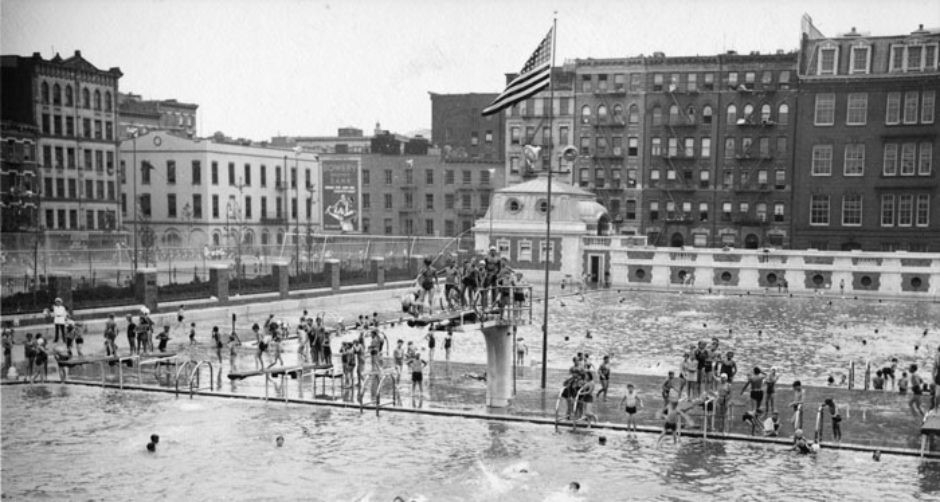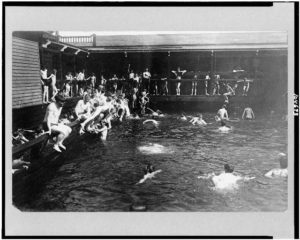If you’re someone, like me, who has always wondered why the articles of clothing we wear for swimming are often called bathing suits, please, read on. This project is an attempt to describe the role of bathing and swimming in the lives of select populations of children in Manhattan between 1850 and 1950. Additionally, I attempt to illuminate the roles children played in the history of bathing and swimming as an institution. This project examines the confluence of social control and hierarchies with health and hygiene against the geography of Manhattan and the geographies of bathing and swimming facilities themselves. I argue that, despite the great amount of control that adults in power attempted to exert over these facilities and their users, the younger bathers and swimmers had their own forms of influence on, and power and control of the spaces they used and enjoyed. Bathing and swimming facilities played different roles in the lives of many different children. The relationship of freedoms and restrictions enacted through bath houses and pools impacted the way many children experienced and constructed their childhoods. The public bath, in Manhattan specifically, and the subsequent rise of the public swimming pool provides insight into the lived experiences of children in the late 19th and early 20th centuries. Lower socio-economic class, immigrant children played vital roles as interpreters of American society for their parents. Additionally, childhood in New York City during this time period was greatly impacted by social practices of cleanliness and physical health, dynamics between different social groups, and play. These factors contributed to the production of the American child, ideal or deficient. It is important to acknowledge and take into account the social and political settings (in New York and in the U.S.) in which these stories of children and pools take place. Please reference this interactive timeline as a tool for grounding in place and context. Moving forward, I will assume that all readers of the content in the rest of this website have an understanding of the context this timeline provides.

